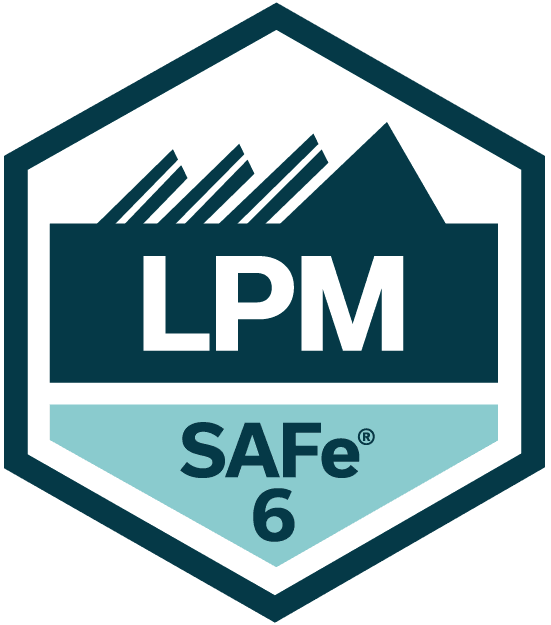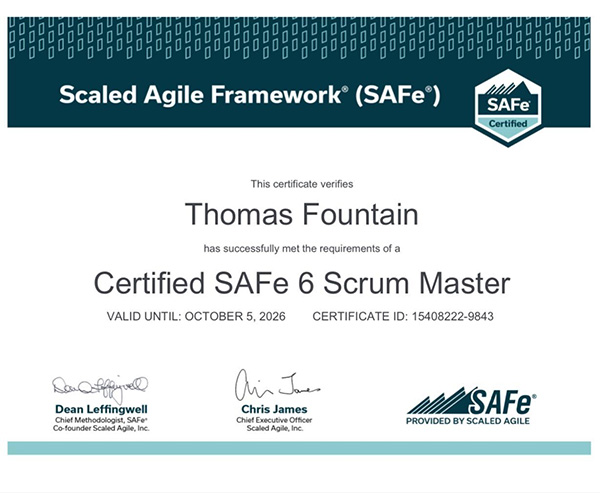Why SAFe DevOps Certification Is a Must-Have for Agile Professionals
Wiki Article
SAFe Accreditation: Empowering Leaders in Scaled Agile Frameworks
The landscape of task administration is developing, and SAFe Certification stands as a pivotal component for leaders looking for to apply the Scaled Agile Structure efficiently. This certification furnishes experts with necessary skills to cultivate partnership and innovation within their groups, eventually enhancing business performance. Nonetheless, the trip to ending up being a licensed SAFe leader includes even more than simply acquiring expertise; it includes recognizing the nuanced duties and duties within nimble settings. As we check out the intricacies of SAFe Accreditation, the effects for leadership performance and organizational success warrant deeper exam.Comprehending SAFe Qualification
SAFe accreditation, which represents Scaled Agile Structure accreditation, is a credentialing program made to equip professionals with the knowledge and skills essential to implement nimble methods at scale within their organizations. The SAFe framework offers a structured technique that assists organizations align their teams and take care of bigger jobs properly, making certain that active techniques are used constantly across various levels.The certification encompasses numerous functions, consisting of SAFe Agilist, SAFe Professional, and SAFe Program Expert, each concentrating on different elements of the framework. The program highlights the significance of lean principles, continuous shipment, and partnership among teams, cultivating an atmosphere favorable to technology and efficiency.

Individuals undertake strenuous training that combines academic expertise with practical application, improving their capability to lead dexterous changes. The educational program includes subjects such as agile groups, program execution, and profile monitoring, ensuring that certified experts are skilled in all aspects of the SAFe approach.
Benefits of SAFe Accreditation
Obtaining a Risk-free qualification offers numerous benefits for professionals seeking to enhance their professions in active job monitoring. It gears up people with a detailed understanding of the Scaled Agile Framework, allowing them to successfully apply agile principles across big companies. This expertise is critical as organizations increasingly take on nimble techniques to improve productivity and flexibility.Additionally, SAFe qualification boosts a prospect's bankability and occupation leads. SAFe Lean Portfolio Management. As organizations look for qualified specialists to lead their agile changes, certified people can command higher incomes and stand apart in a competitive task market. Acquiring this qualification shows a commitment to continuous understanding and specialist growth, which is very related to by employers.
Networking chances also arise from SAFe certification, attaching individuals with an area of like-minded experts and industry leaders. This can bring about cooperation, mentorship, and understanding sharing, further improving one's expert experience.
Finally, licensed specialists are commonly much better outfitted to promote a culture of partnership and innovation within their teams, driving effective outcomes in active tasks. In general, the advantages of SAFe certification are manifold, making it a useful investment for those in the agile task administration domain name.
The Certification Refine

Candidates are after that urged to get involved in an extensive training course, generally conducted by a certified SAFe trainer. These courses SAFe DevOps certification cover necessary ideas, concepts, and practices of the Scaled Agile Framework, supplying individuals with beneficial understandings and functional expertise.
Complying with the training, candidates must pass a qualification exam to show their understanding and proficiency in applying SAFe principles. The exams are designed to assess not only understanding yet also the capability to execute nimble methods efficiently within a scaled setting.
When accredited, individuals get to a riches of resources, consisting of community networks and continuous understanding chances, which better boost their active management capabilities. Maintaining accreditation needs continual specialist advancement, guaranteeing that leaders stay present with evolving techniques within the structure. Ultimately, the accreditation procedure is a strenuous yet fulfilling pathway for those useful reference aiming to succeed in nimble leadership.
Responsibilities and duties
Efficient application of the Scaled Agile Structure (SAFe) relies heavily on plainly defined functions and duties within a company. These roles are important for guaranteeing placement, effectiveness, and effective partnership throughout groups.At the team degree, essential duties include the Scrum Master, Product Proprietor, and Agile Team Members. The Scrum Master helps with the dexterous procedure, ensuring that the group sticks to the SAFe principles while getting rid of obstacles. The Product Proprietor is responsible for making best use of the worth of the item and taking care of the backlog to line up with business objectives. Agile Team Members add their specialized abilities to supply high-grade increments.
At the program level, the Release Train Engineer (RTE) plays an important duty in coordinating the Agile Release Train (ART), making certain smooth program execution and positioning throughout several teams (SAFe Agilist). In addition, the system engineer and company owner provide technical support and calculated vision, specifically
Continual Enhancement in SAFe
Continual enhancement is a foundation of the Scaled Agile Structure (SAFe), driving companies to improve their processes, items, and overall efficiency. By fostering a society of continual improvement, SAFe motivates teams to routinely evaluate their workflows and outcomes, determine inadequacies, and apply strategies for improvement. This iterative process not just improves productivity yet also lines up teams with the company's tactical objectives.Central to this approach are the Inspect and Adapt (I&A) workshops, which supply structured opportunities for representation and understanding. Throughout these sessions, teams examine efficiency metrics, go over challenges, and create workable understandings to guide future models. In addition, using Agile Launch Trains (ARTs) facilitates cross-functional cooperation, making it possible for teams to share best methods and drive collective improvement.
Additionally, Lean-Agile leadership plays a vital function in advertising a state of mind of continual improvement. Leaders are charged with promoting an atmosphere where testing is encouraged, and failures are considered as finding out chances. By embedding continual enhancement into the organizational culture, SAFe empowers groups to continue to be dexterous and responsive to altering market needs, eventually enhancing their capacity to deliver worth to clients.
Conclusion
To conclude, SAFe Qualification acts as an essential tool for leaders intending to apply active practices effectively within their companies. By fostering an extensive understanding of the Scaled Agile Structure, this qualification enhances advancement, cooperation, and task results. In addition, it opens opportunities for specialist development and navigate to this website networking amongst sector experts, making sure that qualified professionals remain experienced in navigating the complexities these days's dynamic company landscape. Eventually, SAFe Certification contributes significantly to business success and durability.The landscape of project administration is advancing, and SAFe Qualification stands as a pivotal aspect for leaders looking for to implement the Scaled Agile Framework successfully.Acquiring a Secure qualification offers various benefits for specialists looking to enhance their occupations in dexterous project management - SAFe For Architects. The Scrum Master promotes the agile procedure, guaranteeing that the team adheres to the SAFe principles while eliminating impediments. By installing continuous improvement into the organizational society, SAFe empowers groups to continue to be receptive and dexterous to transforming market needs, ultimately improving their capability to provide value to customers
In conclusion, SAFe Accreditation offers as a crucial tool for leaders aiming to execute nimble techniques effectively within their companies.
Report this wiki page